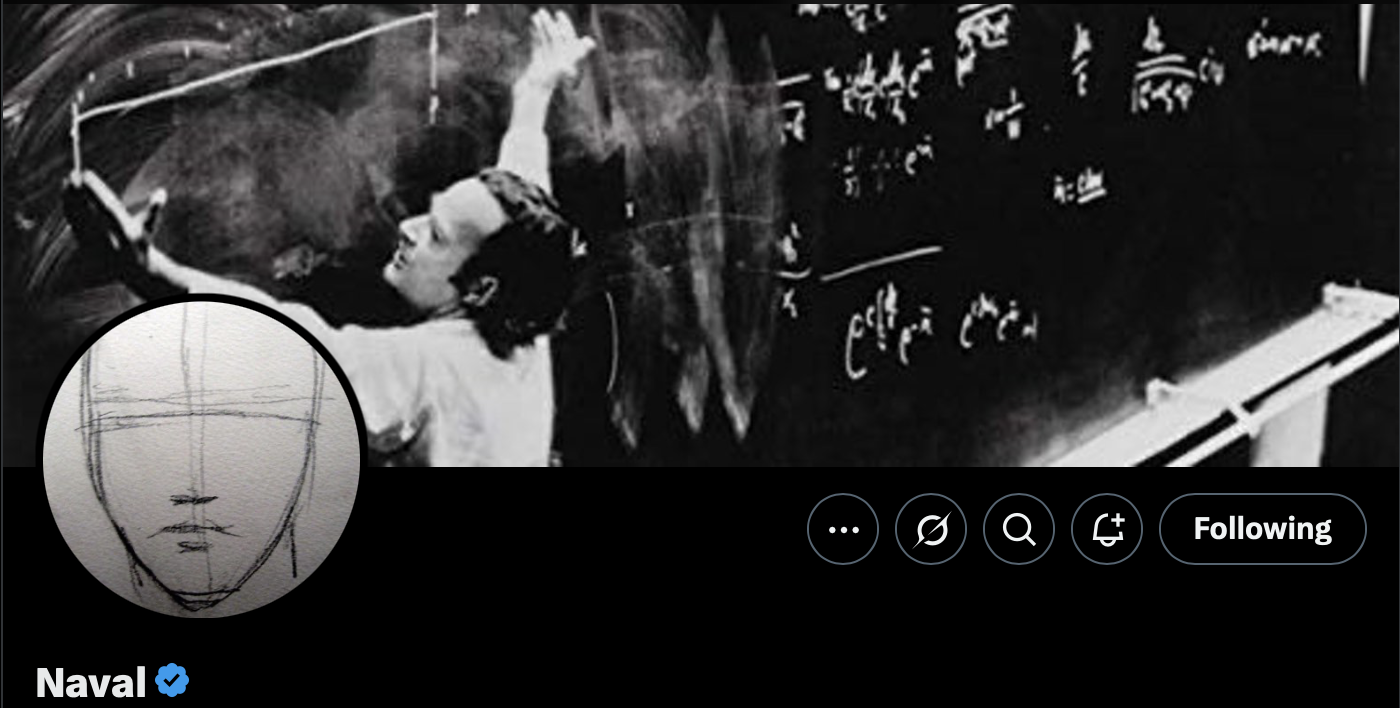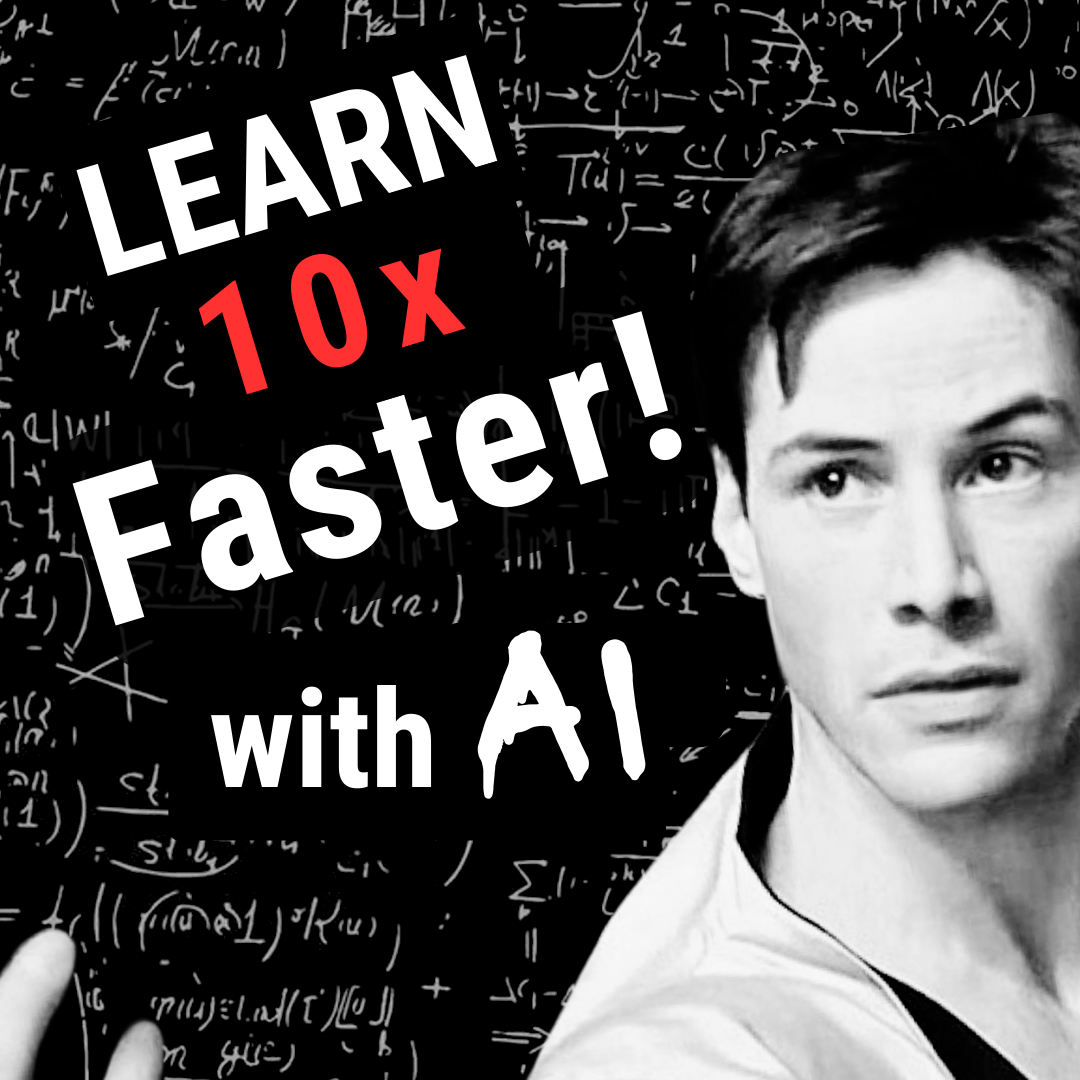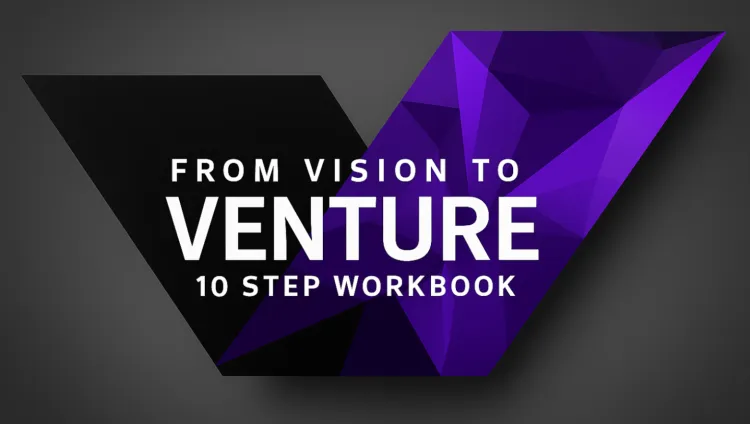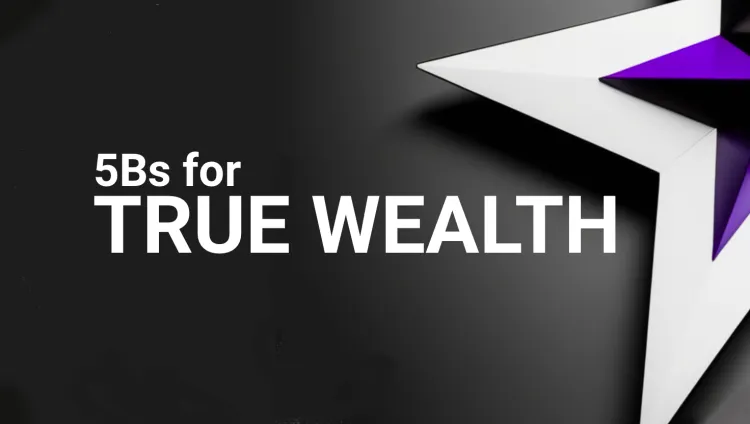Remember that iconic scene from The Matrix where Neo downloads combat skills directly into his brain within seconds?

While not everybody can plug cables into their head yet, the combination of AI and OwnFoundations' 7-Step NEXUS Method gets you surprisingly close to that science fiction ideal. The ability to absorb and master new skills at extraordinary speed is no longer fantasy—it's a necessity.
Have you ever wondered why some people seem to master complex skills in weeks while others struggle for years?
The brutal truth? Most people don't know how to learn effectively. They consume endless podcasts, YouTube videos, books, and courses—yet six months later, they have nothing to show for it.
Most of us were taught to memorize facts for exams and then promptly forget them. We've become professional consumers of information rather than skilled implementers. This passive consumption has become a form of intellectual entertainment—it delivers cheap dopamine hits that feel productive but yield no tangible results.
Here's the harsh reality: If you're competing in today's economy with outdated learning methods, you're on a sinking ship.
Traditional employment isn't just changing—it's failing. AI isn't just drilling holes in the vessel—it's flooding the lower decks. You have two choices:
- Keep trading your limited time for diminishing returns, directly competing against machines that never sleep, never take vacation, and get smarter every day.
OR
- Become a tech-powered entrepreneur who leverages AI systems to work while you don't, reclaiming ownership of your time and building a future YOU actually control.
The most valuable skill you can develop right now isn't coding, marketing, or even AI engineering—it's learning how to learn 10x faster than everyone else. Master this meta-skill, and you'll adapt to any economic shift, technological disruption, or career pivot with remarkable speed.
In the rapidly evolving landscape of the Digital Renaissance, those who can quickly acquire new skills will thrive. Everyone else will scramble to update their resumes.
Why Most People Fail at Learning
Let's examine why traditional learning approaches fail so miserably:
The Passive Consumption Trap
Most people approach learning backward. They watch tutorials, read textbooks, and listen to experts explaining concepts—then wonder why nothing sticks. They focus overwhelmingly on input when they should be prioritizing output.
It's like trying to learn swimming by reading about swimming techniques. You might understand the theory, but the moment you hit the water, you'll sink.

The Missing Framework
Schools never taught us how to learn. They taught us how to pass standardized tests—a completely different skill. Without a proper framework for acquiring knowledge efficiently, we default to ineffective methods:
- Cramming information
- Highlighting textbooks
- Re-reading materials repeatedly
These passive approaches create an illusion of progress while delivering minimal results. They're comfortable but ineffective.
The Lack of Purpose
One of the most crucial failures is: learning without clear purpose. When you don't connect what you're learning to specific goals or projects that matter to you, your brain has no framework to organize the information. It becomes random noise instead of structured knowledge.
"Education without application is just entertainment." — Tim Sanders
🤖 The Missing AI Advantage
In 2025, attempting to learn anything without leveraging AI is like trying to cross the ocean in a rowboat when speedboats are readily available. AI tools can dramatically accelerate your learning process, yet most people either don't use them or use them ineffectively.
The executive formula is brutally simple: replace salaries with AI, watch costs go down, and share prices go up. What used to take years now happens with a single software update.
The same formula can be applied to your personal learning: replace inefficient methods with AI-enhanced approaches, watch learning time go down, and skill acquisition go up.
🧩 The Mindset Problem
If you believe you're bad at learning, you'll struggle. The language we use with ourselves matters profoundly. Instead of thinking, "I can't do this," try saying, "I can't do this... yet." That one little word makes a world of difference, shifting your focus from failure to potential.
💰 The Ownership Disconnect
Most critical of all: Learning without ownership is labor—learning with ownership is investment. When you learn as an employee, your newly acquired skills benefit your employer first and foremost. When you learn as an owner, every new capability compounds your own wealth and freedom.
Those who own equity in a company profit enormously from the labor skills, while those who merely trade time for money are discarded when technology makes them obsolete.
The NEXUS Method: Your 10x Learning System in 7 Steps
Now that we understand why traditional approaches fail, let's unveil OwnFoundations' NEXUS Method ("Neural Excellence X Ultra Speed") that helps you learn anything 10x faster—combining cutting-edge learning science with AI acceleration.
Step 1: Create Your Learning Map
Before diving into any new skill, define your "WHY." Map exactly how this skill connects to your ideal future.
Ask yourself:
- How does this skill move me toward my larger goals?
- What specific problems will this help me solve?
- How will mastering this change my life in tangible ways?
- Will this skill help me create assets I own, or just make me a better employee?
This isn't just motivational fluff—it's cognitive (and wealth) architecture. Your brain prioritizes information that connects to meaningful goals. By creating this map, you're literally rewiring your neural pathways to absorb relevant information more efficiently.
Step 2: Project-First Learning
This is the game-changer most people miss: Don't start with tutorials. Start with a real project.
The best way to learn is to build something tangible and search for information only when you hit obstacles. Your learning becomes laser-focused on what you actually need to know rather than everything there is to know.
For example:
- Learning web development? Start building a simple website.
- Learning a language? Try having a basic conversation with a person in the respective country.
- Learning data analysis? Import an interesting dataset and start exploring it.
When you hit obstacles (and you will!), that's when tutorials, books, and experts become valuable. This "just-in-time" learning approach ensures nearly 100% knowledge retention because you're applying everything immediately.
As research in cognitive science confirms, application-driven learning creates stronger neural connections than passive consumption. Our brains contain roughly 100 billion neurons, and neuroplasticity—the brain's ability to reorganize by forming new neural pathways—is significantly enhanced when we actively apply knowledge rather than simply absorbing information passively.
To maximize focus during project sessions:
- Put your phone in another room—not just on silent, physically away from reach
- Close and deactivate all unnecessary tabs and notifications
- Laser in on one thing at a time—multitasking is the enemy of focus
- Use the best hours of your day for focused learning—not doom scrolling social media
Step 3: Implement AI-Enhanced Deliberate Practice
Not all practice is equal. Deliberate practice—focusing intensely on improving specific aspects of performance—is what separates high performers from amateurs.
Here's how to enhance deliberate practice with AI:
- Use AI to analyze your investment portfolio and identify potential blind spots
- Create personalized routines to strengthen your analysis of specific market sectors
- Get immediate feedback through AI-assisted backtesting and adjust your approach based on results
Whether you're mastering technical analysis, fundamental valuation, or macroeconomic forecasting, AI can provide customized practice opportunities that complement the valuable insights from experienced mentors.
Step 4: Leverage the Feynman Technique with AI

The legendary physicist Richard Feynman (see above) popularized a powerful learning technique: explain complex concepts in simple terms as if teaching a child. This exposes gaps in your understanding and forces deeper comprehension.
Here's how to implement this with AI:
- Attempt to explain the concept in simple terms to an AI assistant
- The AI will identify gaps in your explanation and ask clarifying questions
- Research to fill those gaps
- Refine your explanation until both you and the AI agree it's clear and comprehensive
For complex topics with multiple sources, Google's NotebookLM is a game-changer, which you can experience in action below...
Step 5: Transform Learning into Digital Assets
Here's where the ownership mindset separates the merely skilled from the truly wealthy: Convert your learning into digital assets that generate income while you sleep.
Every new skill you acquire can be transformed into:
- Automated systems (trading algorithms, marketing funnels, content pipelines)
- Digital products (courses, templates, tools, software)
- Intellectual property (methods, frameworks, systems)
Unlike job skills that only produce income when you're actively working, digital assets continue generating returns indefinitely with minimal maintenance.
When I left the corporate world, I systematically converted my financial expertise into investments, investing frameworks, and automated analysis tools. While most analysts trade time for money by producing reports, digital assets continue generating returns regardless of whether you are working that day.
The wealthiest people don't just learn skills—they transform those skills into ownership structures that work for them.
Step 6: Implement Strategic Immersion
Immersion isn't just for language learning—it's effective for any skill. Create an environment where you're constantly exposed to what you're learning:
- Use the Pareto Principle (aka 80/20 Rule) to identify the core 20% of the skill that gives 80% of the results
- Design your physical and digital spaces to reinforce learning (change your screensaver, rearrange your workspace)
- Engage multiple senses (watch, listen...) then do and teach
For example, when learning about stock valuation, set price alert notifications for companies you're studying, join investment communities where valuation metrics are actively discussed, and create a dashboard with key financial indicators to make analysis more frictionless.
Step 7: Prioritize Rest and Recovery
Your brain, like your muscles, needs recovery time to strengthen. During sleep, your brain organizes everything you've learned, strengthening neural connections and clearing out unnecessary information.
If you're pulling all-nighters to cram, you're actually sabotaging yourself. Taking regular breaks during focused learning sessions boosts productivity and retention. Consider implementing:
- The Pomodoro Technique: 25 minutes of focused work followed by a 5-minute break
- Proper sleep routines to ensure quality rest
- Strategic breaks between learning sessions to allow for neural consolidation
A surprising fact about learning: a little bit of stress can actually enhance performance—it increases alertness and helps your brain encode memories more effectively. However, chronic stress has the opposite effect, destroying memory capacity and cognitive function. The sweet spot is mild, temporary stress followed by adequate recovery.
Combat the forgetting curve (our natural tendency to forget information over time) by implementing spaced repetition. Without reinforcement, information disappears—just like muscles that aren't used. By revisiting concepts at strategic intervals, you move knowledge from short-term to long-term memory, making it accessible when needed.
Your Ultra-Compact Learning Acceleration Plan
While Malcolm Gladwell popularized the 10,000-hour rule to mastery, who has five years of full-time dedication for each new skill? Modern reality demands efficiency. Research shows you can reach functional competence in most skills within just 20 hours of deliberate practice - exactly what OwnFoundations' NEXUS Method structures for you.
Are you ready to put OwnFoundations' NEXUS Method into action even with the busiest schedule? I've created a 👉🏻 downloadable 20-hour implementation plan (just 1 hour per day) that will help you reach functional competence in any skill.
This approach breaks down learning into micro-sessions that fit into even the busiest schedules. By stacking these strategic moments, you'll achieve compounding results despite limited time.
Remember: Learning doesn't always require large blocks of time—it requires strategic implementation of 🔥 the NEXUS Method 🔥 in whatever time you have available.
AI-Powered Learning Tools Worth Exploring
As promised above: NotebookLM by Google - The ultimate "tool for understanding" that can:
- Process up to 25 million words across 50 different sources (YouTube videos, PDFs, websites, slides)
- "Digest" up to 50 sources (articles, videos, PDFs, slides) in one AI workspace
- Convert your materials into listenable podcast-style conversations with AI hosts
- Provide source-grounded responses with citations to prevent misinformation
- Allow you to interact with the AI hosts during audio playback
This creates a feedback loop that rapidly accelerates understanding. The AI becomes your 24-7-365 learning companion, providing instant feedback at exactly the moment you need it.
I recently had NotebookLM explain what AI Tokens are, provided some sources, and here you can check out the result 🤖 AI Tokens explained with NotebookLM 🦾 (Spoiler alert: pretty impressive to say the least!)
The One Thing You Must Do Now
If you take ONE thing from this newsletter, make it this: Your ability to learn rapidly isn't optional anymore—it's your life jacket in a sea of AI disruption.
Traditional careers are being automated while those who can quickly adapt and learn new skills are thriving. The gap between these two groups grows wider every day.
Most people will read this and continue with their ineffective learning methods. Don't be most people. Implement this system today—start with a real project, leverage AI tools, and focus on application rather than consumption.
Those who master the meta-skill of learning will build the businesses, make the investments, and create the future they desire, while others update their resumes and hope for the best.
"The illiterate of the 21st century will not be those who cannot read and write, but those who cannot learn, unlearn, and relearn."
Until next time,
Mo
P.S. What skill are you currently learning or want to learn? Reply to this email and let me know—I'll send you some customized AI prompts specifically designed to accelerate your learning in your area.




